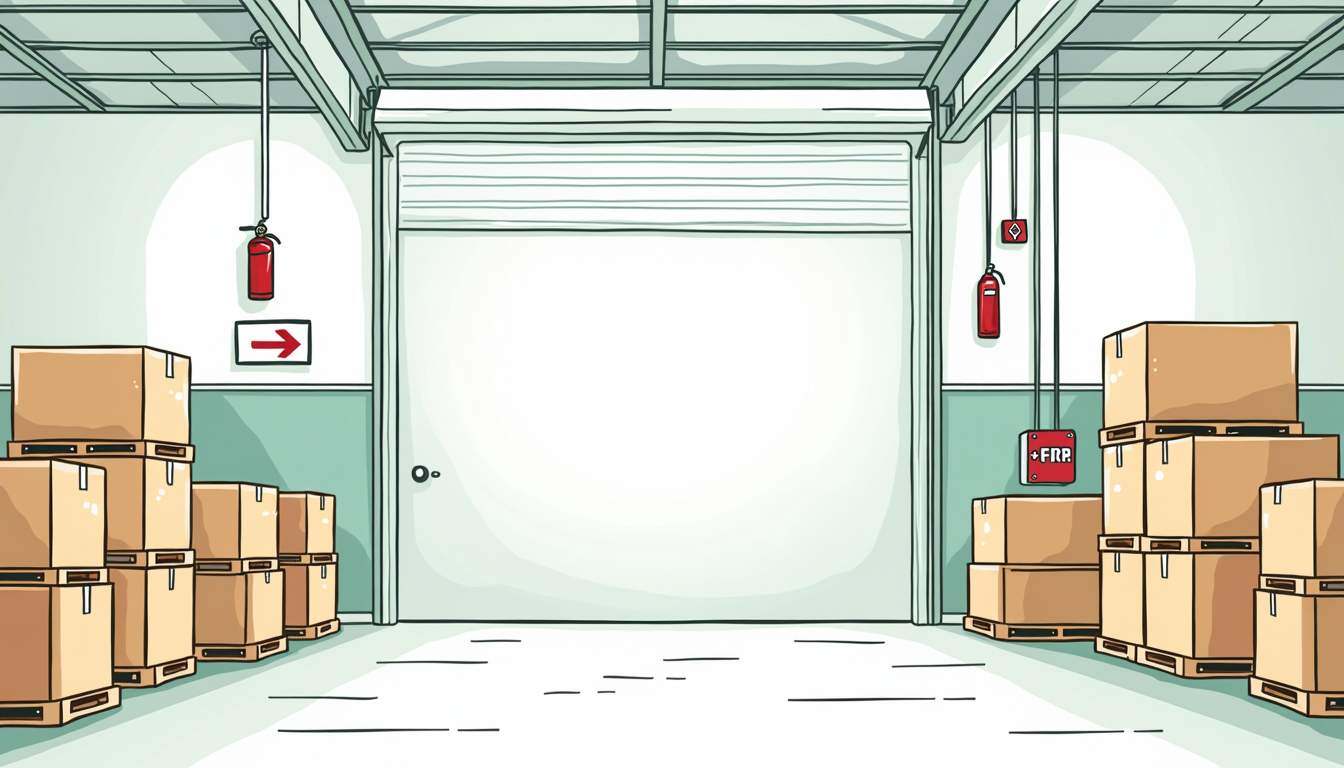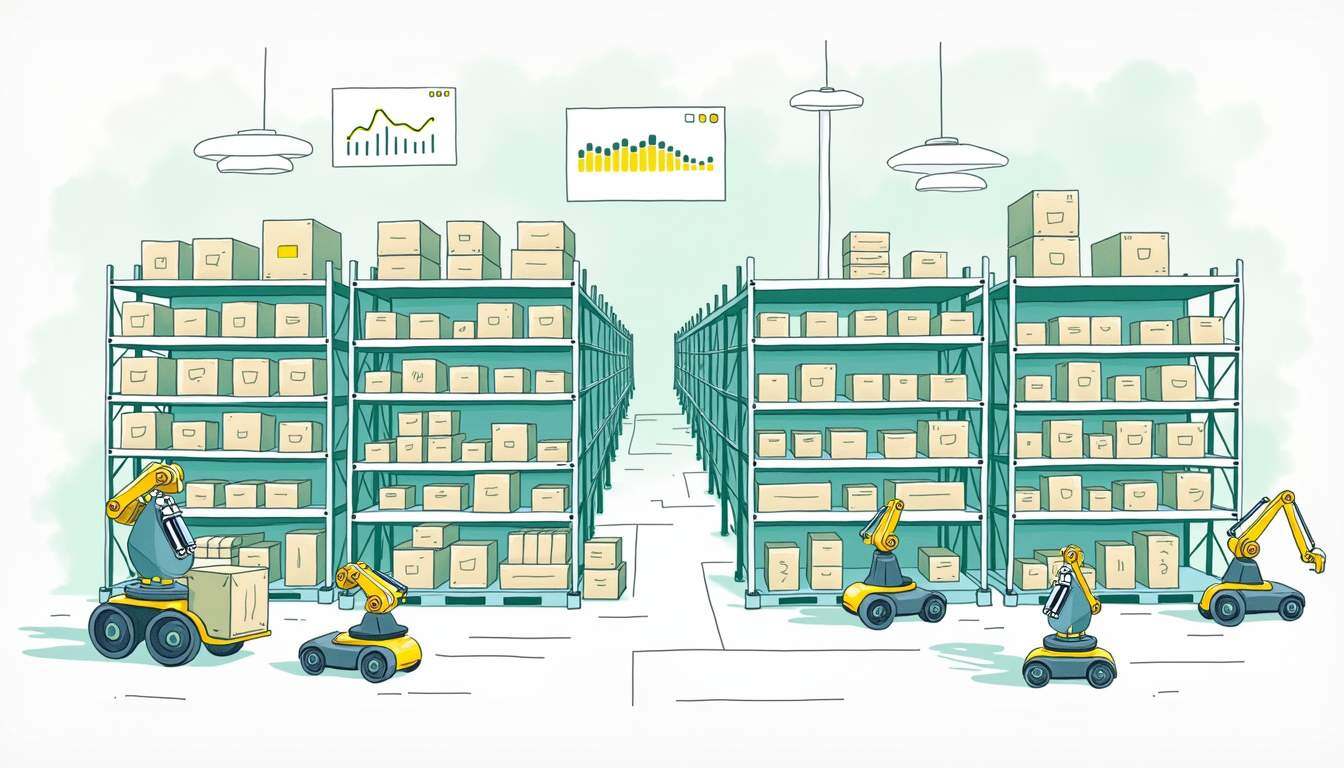Share this
Are You Compliant with Warehouse Safety Regulations?
by Shipfusion Team on Apr. 2, 2025

Warehouse safety regulations are essential for maintaining a secure and efficient work environment. These regulations not only protect employees but also ensure the smooth operation of warehouse activities. Understanding and implementing these guidelines can help businesses avoid costly accidents and legal issues.
Why Warehouse Safety Regulations Matter
Adhering to warehouse safety regulations is not just about compliance; it's about creating a culture of safety that benefits everyone involved. These regulations are designed to minimize risks and protect workers from potential hazards.
Protecting Employees
Employees are the backbone of any warehouse operation. Ensuring their safety is paramount. Regulations provide a framework for identifying and mitigating risks, such as slips, trips, and falls, which are common in warehouse settings. For example, proper signage and floor markings can prevent accidents by guiding employees safely through the warehouse. Regular training sessions also keep safety protocols fresh in employees' minds.
Enhancing Operational Efficiency
Safety regulations contribute to operational efficiency by reducing downtime caused by accidents. When employees feel safe, they are more productive and focused on their tasks. Implementing safety measures such as ergonomic equipment and proper storage solutions can streamline operations and reduce the likelihood of injuries.
Key Components of Warehouse Safety Regulations
Warehouse safety regulations encompass various aspects, from equipment handling to emergency procedures. Understanding these components is crucial for maintaining a safe work environment.
Equipment Handling and Maintenance
Proper handling and maintenance of equipment are vital to warehouse safety. Regulations often require regular inspections and maintenance of machinery to prevent malfunctions that could lead to accidents. For instance, forklifts should be inspected daily to ensure they are in good working condition. Operators must be trained and certified to handle such equipment safely.
Emergency Procedures
Having clear emergency procedures in place is essential for responding effectively to incidents. Regulations typically mandate regular drills and the availability of emergency equipment, such as fire extinguishers and first aid kits. Employees should be familiar with evacuation routes and assembly points to ensure a swift and orderly response in case of an emergency.
Proper Storage Practices
Warehouses handle high volumes of inventory, and improper storage can create safety hazards. Regulations outline best practices for stacking, labeling, and securing materials to prevent falls, collapses, and hazardous spills. Heavy items should be stored on lower shelves to reduce tipping risks. Aisles should be kept clear to ensure easy access to fire exits and equipment. Flammable or hazardous materials should be stored in designated areas with proper ventilation and safety labeling.
Implementing Warehouse Safety Regulations
Implementing safety regulations requires a proactive approach and commitment from all levels of the organization. It involves continuous monitoring and improvement of safety practices.
Training and Education
Regular training and education are crucial for keeping employees informed about safety protocols. Training sessions should cover topics such as equipment operation, hazard identification, and emergency response. Interactive training methods, such as simulations and hands-on exercises, can enhance understanding and retention of safety information.
Monitoring and Evaluation
Continuous monitoring and evaluation of safety practices help identify areas for improvement. Regular audits and inspections can uncover potential hazards and ensure compliance with regulations. Feedback from employees can also provide valuable insights into the effectiveness of safety measures and highlight areas that need attention.
Overcoming Compliance Challenges as a Growing Ecommerce Business
For growing ecommerce businesses, meeting warehouse safety regulations presents unique challenges. As operations scale, new risks emerge, requiring businesses to stay ahead of compliance while maintaining efficiency. Balancing growth with regulatory adherence demands a structured approach.
Managing Rapid Expansion
Expanding operations means increasing warehouse staff, inventory, and equipment. Without proper oversight, safety can take a backseat, leading to compliance violations and operational risks. Implementing scalable safety protocols and regular compliance audits can help prevent these issues.
Adapting to Evolving Regulations
Regulatory requirements are constantly changing, and businesses must stay informed to avoid penalties. Partnering with legal advisors and industry experts ensures that warehouses remain compliant while adapting to new policies.
Investing In Employee Training
A growing workforce means more employees need safety training. Developing an ongoing education program helps ensure that all team members understand safety regulations and best practices, reducing the likelihood of accidents.
Leveraging Technology for Compliance
Modern warehouse management systems (WMS) can automate safety checks, track compliance metrics, and generate real-time reports. Investing in these technologies helps businesses streamline safety efforts while maintaining efficiency.
Partner with Shipfusion for Safe and Efficient Fulfillment
As you strive to build a culture of safety within your warehouse operations, consider the added benefits of partnering with Shipfusion. We are committed to providing ecommerce brands with secure, efficient, and reliable 3PL fulfillment services. Let us handle the complexities of order processing, shipping, and returns, so you can concentrate on expanding your business. With Shipfusion, you'll enjoy the peace of mind that comes from expert inventory management and cutting-edge real-time technology, ensuring your orders are fulfilled accurately and punctually.
Ready to elevate your fulfillment strategy? Get Pricing today and discover how we can support your business's growth and safety goals.
Share this
You May Also Like
These Related Articles

What Does It Take to Become an FDA Approved Warehouse?

7 Ecommerce Warehouse Best Practices You Can Implement Right Now

Amazon FBA Prep Requirements: Complete Guide For 2024
- April 2025 (4)
- March 2025 (26)
- February 2025 (26)
- January 2025 (37)
- December 2024 (16)
- November 2024 (23)
- October 2024 (22)
- September 2024 (27)
- August 2024 (9)
- July 2024 (8)
- June 2024 (5)
- May 2024 (8)
- April 2024 (8)
- March 2024 (6)
- February 2024 (6)
- January 2024 (5)
- December 2023 (3)
- November 2023 (3)
- October 2023 (5)
- September 2023 (4)
- August 2023 (2)
- July 2023 (1)
- June 2023 (4)
- March 2023 (2)
- October 2022 (1)
- September 2022 (5)
- August 2022 (4)
- July 2022 (7)
- June 2022 (4)
- May 2022 (4)
- April 2022 (6)
- March 2022 (2)
- February 2022 (1)
- January 2022 (3)
- December 2021 (2)
- November 2021 (4)
- October 2021 (2)
- September 2021 (5)
- August 2021 (4)
- July 2021 (5)
- June 2021 (3)
- May 2021 (2)
- April 2021 (3)
- March 2021 (3)
- February 2021 (3)
- January 2021 (2)
- December 2020 (4)
- November 2020 (2)
- October 2020 (4)
- September 2020 (2)
- July 2020 (5)
- June 2020 (4)
- May 2020 (2)
- April 2020 (2)
- March 2020 (4)
- February 2020 (1)
- December 2019 (1)
- May 2018 (1)
- March 2018 (2)
- February 2018 (3)
- January 2018 (3)
- November 2017 (3)
- July 2017 (4)
- March 2017 (3)
- February 2017 (5)
- January 2017 (3)
- December 2016 (4)
- November 2016 (6)
- October 2016 (6)
- October 2015 (1)
- September 2015 (1)
- June 2015 (3)
- May 2015 (3)
- August 2014 (1)
- July 2014 (1)
- March 2014 (1)
- February 2014 (1)